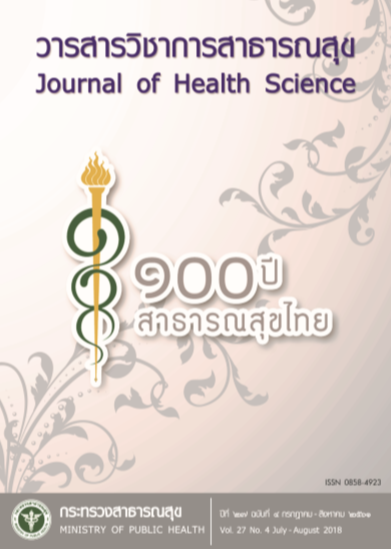Using Cost-Effectiveness Analysis for AIDS Prevention and Alleviation in Youth and Other Most at Risk Population by Participatory Learning for Health Development
Keywords:
cost-effectiveness, intervention, youth, HIV cases preventedAbstract
Nowadays, financial crisis becomes a major problem worldwide and affects the policy towards triple zero of AIDS. The investment in prevention is less than providing treatment and care. Cost-effec-tiveness analysis is crucial to find out which intervention is the most efficient. The purpose of study was to assess the economic evaluation using cost–effectiveness analysis of HIV preventive interventions. To calculate cost and effectiveness of interventions implemented among 567 youths, the study was conducted in 4 steps: (1) identify the main intervention, (2) analyze data for cost from secondary data, (3) analyze data on effectiveness from face to face interview using questionnaire, and (4) cost-effectiveness analysis to find out the most cost-effective intervention. The costs for 4 interventions for youths — (1) develop-ment of enhancing life skills course, volunteering, networking and leadership, (2) establishing network and partnership through collaboration with government organizations, (3) developing a network of coop-eration between partners and the organizations working with youth and (4) capacity building and perfor-mance on AIDS awareness among youth through media, were 11,468,326, 45,249,987, 17,472,000 and 47,007,997 baht, respectively; and the effectiveness of each intervention was 2,995, 12,562, 1,641 and 20,930 HIV cases prevented, respectively. The cost-effectiveness analysis shows that the cost to prevent one case from HIV in four interventions was 4,551, 3,596, 10,633 and 2,232 baht, respec-tively. Thus, the most Cost-effective intervention for youth was capacity building and performance on AIDS awareness through media. Although, cost of this intervention was higher but had much more effec-tiveness than others. The reason that makes it the most effective is because the involvement of young people in the production process let them to be able to understand and appreciate how to prevent HIV infection. This most cost-effective intervention should be promoted and supported by the authorities for better management of HIV prevention program.
Downloads
Downloads
Published
How to Cite
Issue
Section
License
Copyright (c) 2018 Journal of Health Science- วารสารวิชาการสาธารณสุข

This work is licensed under a Creative Commons Attribution-NonCommercial-NoDerivatives 4.0 International License.







